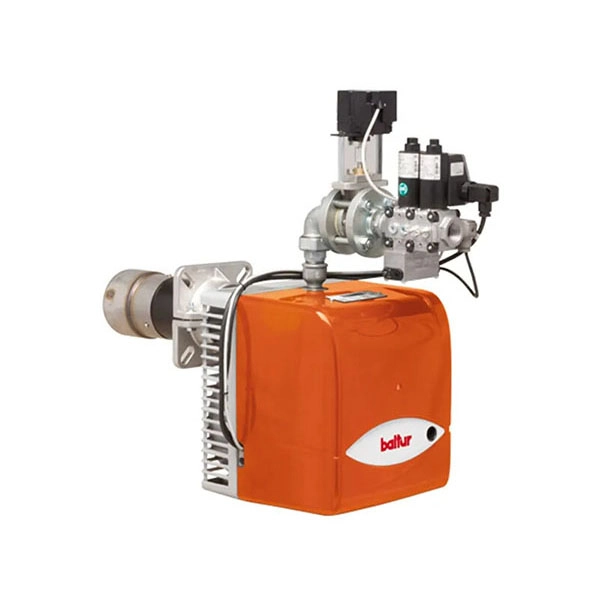
A non-standard oil burner is a customized combustion device designed to meet specific industrial heating requirements that standard burners cannot fulfill. Unlike conventional oil burners, non-standard models are tailored in terms of size, fuel type, flame pattern, and heat output to suit unique processes across industries such as chemical, food processing,metalworking, and power generation.
A non-standard oil burner is a customized combustion device designed to meet specific heating requirements that standard burners cannot fulfill. Unlike conventional oil burners, which come in fixed sizes and capacities, non-standard oil burners are engineered to accommodate unique oil types, specific thermal loads, and specialized industrial applications.
These burners are widely used in industries such as chemical processing, food manufacturing, metalworking, and large-scale heating systems, where precise temperature control and efficient oil consumption are critical. Non-standard oil burners can be adapted for high-viscosity oils, heavy fuels, or low-grade fuels, offering flexibility and performance that off-the-shelf models cannot achieve.
Tailored performance: Designed for specific heating loads and industrial requirements.
Oil versatility: Compatible with various types of oils, including heavy and residual oils.
Energy efficiency:Optimized combustion for reduced fuel consumption. Enhanced durability: Built to withstand harsh industrial environments.
Non-standard oil burners are defined by their high degree of customization and specialized features. Key design principles include:
Customization to Specific Needs: They are built to a customer's exact specifications, considering factors like desired temperature range (which may exceed standard maximums), required heat transfer rate, and compatibility with existing plant layouts or systems.
Adaptable Configurations: While standard burners are often floor-standing, non-standard units can be skid-mounted, wall-mounted, or designed as split systems to fit into tight or unusual spaces.
Specialized Materials: They are often constructed with advanced materials like high-alloy steels (e.g., Inconel, Hastelloy) for chemical resistance, or 316L stainless steel for sanitary environments. This ensures durability and safety in harsh or sensitive conditions.
Advanced Control Systems: Unlike basic thermostats, non-standard burners often incorporate sophisticated control systems, such as Programmable Logic Controllers (PLCs), Human-Machine Interfaces (HMIs), and remote monitoring capabilities, for precise control and process automation.
Efficient Atomization and Combustion: The core function of a burner is to atomize the fuel into a fine spray for efficient combustion. Non-standard burners may use specialized atomization technologies (e.g., air, steam, or rotary cup atomization) to handle different types of fuels or achieve high combustion efficiency.
Non-standard oil burners are used in a wide range of industrial and commercial settings. Some common examples and their applications include:
Waste Oil Burners: These are a prime example of a non-standard burner, designed to burn waste oils (such as used motor oil, hydraulic oil, or vegetable oil) that would otherwise be costly to dispose of. They are particularly useful in industries like automotive repair shops or manufacturing plants, turning a waste product into a free source of heat.
Industrial Furnace and Boiler Applications: Non-standard burners are used in large-scale industrial furnaces, boilers, and kilns for applications like:
Incinerators: For the safe disposal of waste, including hazardous waste and solid waste.
Grain and Sludge Drying: Providing a high-efficiency heat source for agricultural or industrial drying processes.
Rotary Kilns: Used in cement production and other high-temperature processes.
Multi-Fuel Burners: These burners are designed to operate on more than one type of fuel, such as a combination of oil and gas, or different types of oil (e.g., heavy fuel oil, biofuels, kerosene). This provides operational flexibility and can help reduce fuel costs.
Low NOx Burners: Designed with specialized combustion heads and techniques (like flue gas recirculation) to minimize nitrogen oxide emissions, helping industries comply with strict environmental regulations.
|
Feature |
Standard Oil Burner |
Non-Standard Oil Burner |
|
Design |
Fixed, general-purpose models |
Custom-engineered and highly flexible |
|
Application |
Residential and small commercial heating |
Specialized industrial processes |
|
Fuel Type |
Kerosene or light fuel oil |
Wide range of fuels, including waste oil and heavy fuel oil |
|
Power Output |
Typically lower, for heating homes or small buildings |
High-power, ranging into the megawatts (MW) |
|
Control System |
Basic thermostats and safety controls |
Advanced PLCs, HMIs, and remote monitoring |
|
Materials |
Carbon steel or basic stainless steel |
High-alloy steels, specialized coatings |
Take every customer request seriously.

Shuxin
Electromechanical
+86 15516359168
shuxin@sxburner.com
Room 504, Building 11, Wuzhou International Industrial Expo City, Old National Highway 310, Xigong District, Luoyang City, Henan Province
+86 15516359168
shuxin@sxburner.com
Room 504, Building 11, Wuzhou International Industrial Expo City, Old National Highway 310, Xigong District, Luoyang City, Henan Province